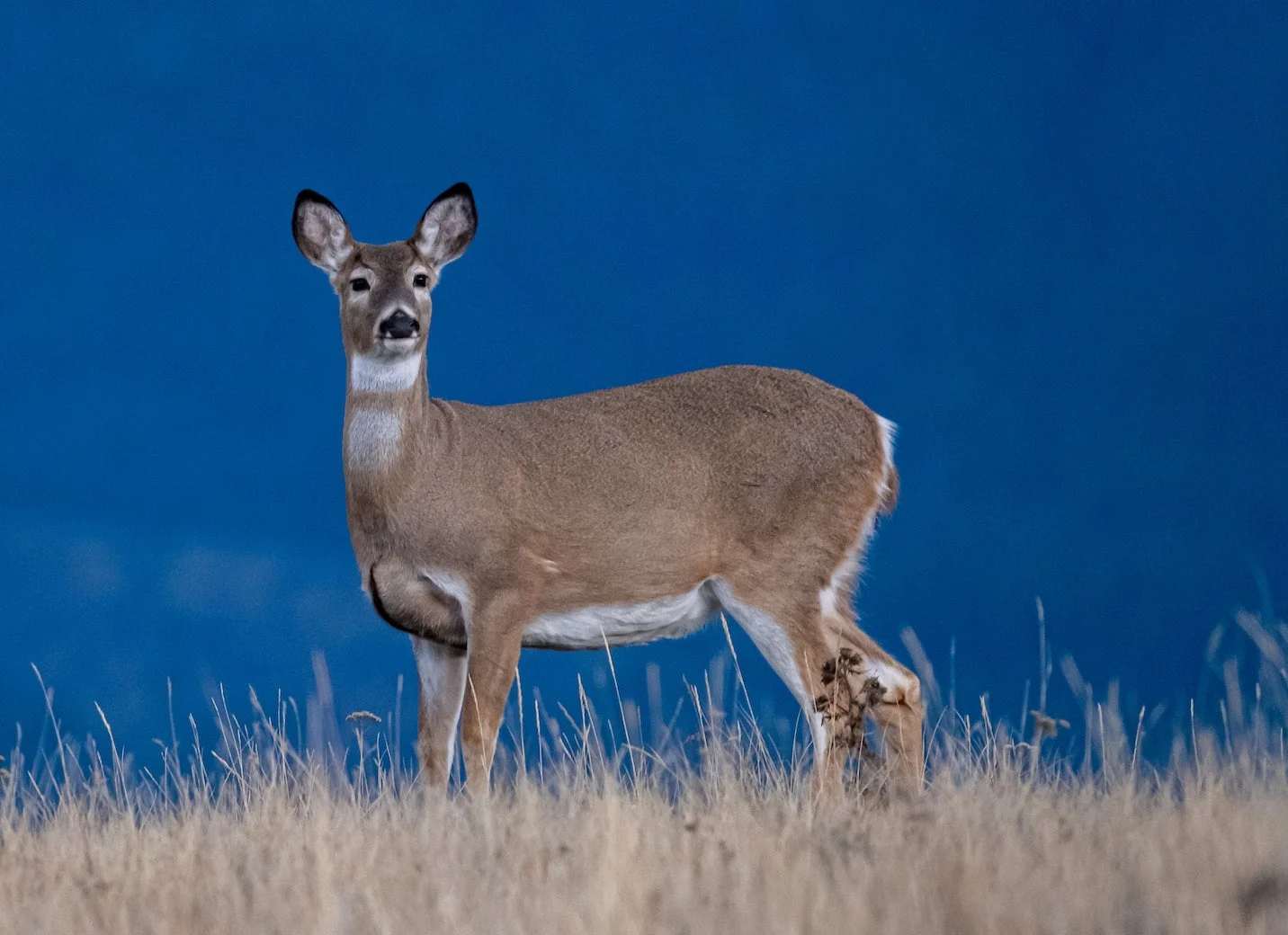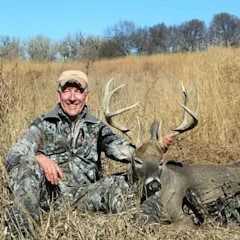These days, with every deer hunter and his brother running trail cameras and able to keep tabs on specific bucks for years, we sometimes hear about 7-1/2, 8-1/2, or even 9-1/2-year-old or older whitetails finally wearing a tag after an epic campaign. But the truth is, most wild deer never come close to reaching those ages. With modern hunters more likely to pass younger bucks, it’s fair to say that deer are living longer, but it’s still the case that a 6-1/2-year-old buck in any hard-hunted area is only a little easier to find than a unicorn or winged Pegasus. Life for a wild, free-ranging deer is so full of hazards that surviving to maturity requires a lot of tumblers to click just right. So, how long do deer live, on average and under the best conditions? Here is a breakdown.
How Long Do Deer Live? Table of Contents
By the Numbers
The Oldest Captive and Wild Whitetails on Record
How Long Do Deer Live? Aging Methods
Causes of Death Among Wild Deer
So, How Long Do Deer Live, On Average, in the Wild?
FAQs
How Long Deer Live—By the Numbers
How long deer live depends on a host of factors, including whether the deer in question are captive or wild, hunted hard or hunted lightly, live in suburbia or in deep wilderness or in a CWD zone, and much more. That said, here is a quick rundown of some pertinent numbers, and then we’ll get into the specifics.

The Oldest Captive and Wild Whitetails on Record
As one might suspect, captive deer tend to live considerably longer than wild ones. Not only do they receive ample food and nutrition, but they also live a relatively stress-free life that allows them to get positively geriatric, compared to free-ranging deer. There are a number of documented examples of captive whitetails (typically does) at research facilities living for 18, 19, and 20 or more years. In his classic book, Encyclopedia of Deer, Leonard Lee Rue references a deer that made it to the ripe old age of 23, and according to Kip Adams of the National Deer Association, the oldest deer on record, as far as they know, was a captive doe in Texas on the Kerr Wildlife Management Area that reached 23 to 24 years old.
On the other side of the fence, life ain’t so easy. Wild deer live much harder lives, and as a result, they don’t live nearly as long on average. However, there are records of rare free-range whitetails living to remarkably old ages. In 2013, Matson’s Laboratory in Montana, which specialized in aging wildlife (and as of this writing, has analyzed just shy of 3 million teeth from wild critters), aged a Louisiana doe at 22 years, and it remains the oldest known wild deer on record. Deer researchers from around the country have recorded a handful of wild does living anywhere from 15 to 19 years and at least one buck making it to 17. That said, it’s important to note that while geezer whitetails may be fairly common in captivity, these top-end ages are extremely rare in the wild and typically found at carefully managed free-range ranches or research facilities.
Related: Where Do Deer Sleep: Top 13 Bedding Areas
How Long Do Deer Live? Aging Methods

One tricky aspect of understanding how long deer live is the fact that our methods for aging deer are not exactly foolproof. The most scientific methods use teeth. When a deer is born, it has four teeth, which are replaced by a full set of adult teeth on its lower jaw (that’s right, deer have no upper teeth).
Scientists learned, after examining the lower jaws of thousands of dead deer, that they can estimate a deer’s age by the wear on its teeth. Basically, the act of grinding down food into a digestible state wears teeth at a reasonably predictable rate of about one millimeter per year. So, taking the average length of the molars (as well as a couple other factors), biologists can predict the age of deer fairly accurately for its first three years. After that, it’s a bit of a crap shoot, depending on where a deer lives and what it eats. In one study, biologists trained in tooth-wear aging were wrong about the deer’s age 60 percent of the time for any deer over 2-½ years old.
Another method is to cut a thin, lateral slice off a molar and count growth rings, much like you’d do if you’re curious about the age of a tree. This technique, known as “cementum annuli” is frr more accurate, but it’s also tedious and fairly expensive. Many state game agencies rely on tooth-wear aging and divide deer into four groups; fawns, 1-½ year old (or yearlings), 2-½ year old, and 3-½ years and older. Of course captive whitetails (raised by breeders and game farms) can be aged so accurately, you can throw them a party on their exact birthday every year.
Causes of Death Among Wild Deer
Wild deer live in a world fraught with peril. Hunters are the largest source of whitetail mortality, and state game agencies rely on annual hunting seasons to keep deer numbers in check. In some deer-rich states, annual whitetail harvests number in the six figures annually.
Vehicles kill a whole bunch of deer each year as well, with several Midwestern states claiming annual roadkills over 50,000 animals. Predators can also be a limiting factor on deer age. Black bears and coyotes can be really efficient predators of fawns (one South Carolina study documented a 70 percent fawn mortality rate, with most killed by coyotes). Adult deer can be killed by coyotes, bobcats, mountain lions, bears, and wolves.
Diseases, especially CWD and EHD, can be devastating to deer populations, claiming up to half the deer in a hard-hit area. And, finally, weather can claim significant numbers of deer at times. Whitetails in northern climes can face long, brutal winters that limit travel, bury food sources, and make deer vulnerable to predation. Severe drought can also affect the survival of plants deer rely on for nutrition. In either weather extreme, does focus on their own survival and will abort fawns. So in addition to the outright mortality caused by weather, a year’s fawn crop can also be smaller.
So, How Long Do Deer Live, On Average, in the Wild?

With hunting being far and away the most significant mortality factor for deer, you can get an idea of life expectancy of wild deer by looking at harvest statistics. In Wisconsin, for example, hunters shot 158,236 bucks in 2020. About 40 percent of those bucks were 1-½ years old, or wearing their first set of visible antlers. So, it’s safe to say that if you’re a yearling buck on the Wisconsin gun opener, your odds of making it to 2-1/2 years old are not great.
On the other hand, living to that age is a relative cakewalk for bucks in many southern states. In Arkansas, Mississippi, and Louisiana, less than 10 percent of hunters tagged yearling bucks in 2020. And in Louisiana, that number held true for 2-½-year-old deer, too. In fact, southern hunters focus their harvest on mature bucks (deer 3-½ years old or older) in such a disciplined manner that these bucks made up an average of 60 percent of the buck harvest in an 11-state area in 2020. Does generally have a better shot at surviving several seasons. In Alabama, 70 percent of hunters were successful in shooting a doe in 2020, but 50 percent of those animals were 3-½ years old or older.
In the end, it’s a fairly safe bet that (barring accident, predators, or disease), a wild doe can expect to make it at least 3 to 6 years, and some may live significantly longer. As for bucks, well, it depends on where they live and how they’re hunted. In many, many areas, a 3-½-year-old buck is a senior citizen. But in some regions or carefully managed areas, antlered deer may get a pass and make it a few more seasons. While I hear of 8-½ (and older) bucks getting taken every fall, these animals are clearly the exception, and for a buck to die of old age in the wild is something akin to a lightning strike.
Related: What Do Deer Eat in Winter? And Should You Feed Them?
FAQs
Q: How long do deer live in the wild?
Deer live an average of 3 to 6 years in the wild. A deer’s overall lifespan depends on a number of factors, including hunting pressure, habitat, disease, and proximity to urban areas.
Q: How long do deer live in captivity?
Generally, deer in captivity live longer than deer in the wild. The average lifespan of deer that live in captivity is 7 to 10 years.
Q: How long do mule deer live?
According to the National Wildlife Federation, mule deer typically live anywhere from 9 to 11 years in the wild.






